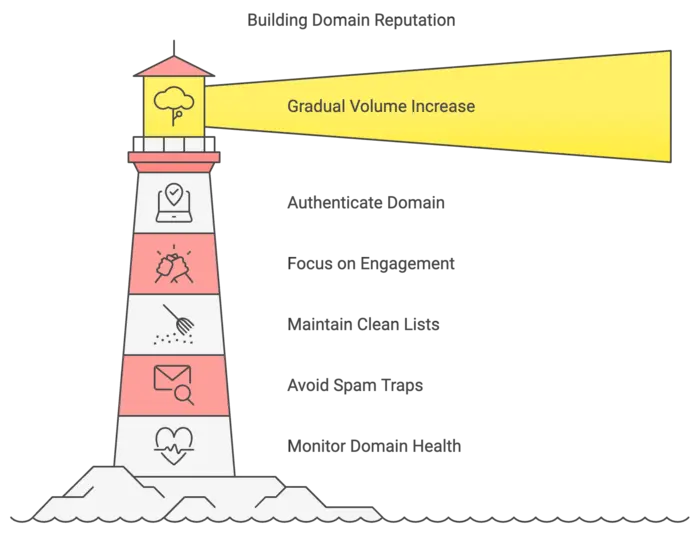
How is domain reputation built?
Building a domain reputation requires consistent, thoughtful email practices. It’s a gradual process, but the payoff is better email deliverability and trust with email service providers (ESPs). Here’s how to build and maintain domain reputation:
1. Gradual volume increase
Start small with your email sends and increase volume steadily. This is especially important for new domains or after a long inactive period. A warmup process prevents sudden spikes that could trigger spam filters.
2. Authenticate your domain
Implementing protocols like SPF (Sender Policy Framework), DKIM (DomainKeys Identified Mail), and DMARC (Domain-based Message Authentication) shows ESPs that your emails are legitimate and reduces the chance of being flagged as spam.
3. Focus on engagement metrics
- Click-through rates: Emails that are opened and clicked frequently indicate relevance to ESPs.
- Replies & interactions: Encouraging replies or marking emails as important improves trust with providers.
- Low spam complaints: Always include a visible unsubscribe option to reduce complaints and maintain a positive reputation.
4. Maintain clean lists
Sending to outdated or incorrect email addresses harms your reputation. Use tools to clean lists regularly, removing bounced and inactive addresses.
5. Avoid spam traps and trigger keywords
Spam traps are fake addresses designed to catch spammers. Sending emails to these can get your domain blacklisted.
Similarly, avoid spammy language like “urgent,” “free,” or “act now,” which can hurt your domain’s reputation.
6. Monitor domain health
Use tools like Google Postmaster Tools and MXToolbox to keep an eye on your domain’s reputation. Regular monitoring helps catch issues before they escalate.
In summary, domain reputation builds over time through stable sending patterns, proper email authentication, list hygiene, and continuous monitoring. These best practices ensure your emails land where they belong—in the inbox, not the spam folder.
